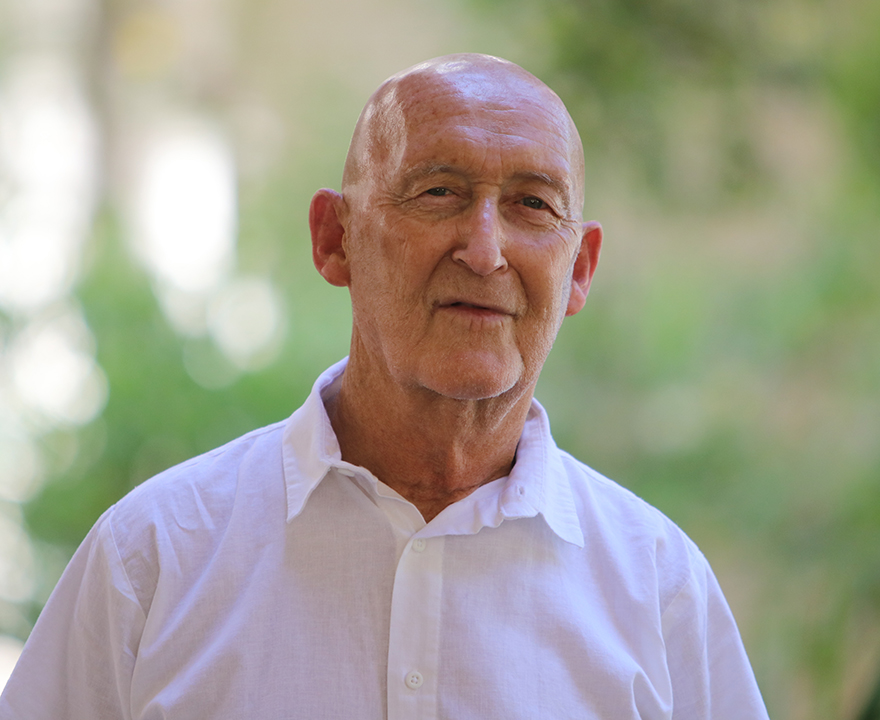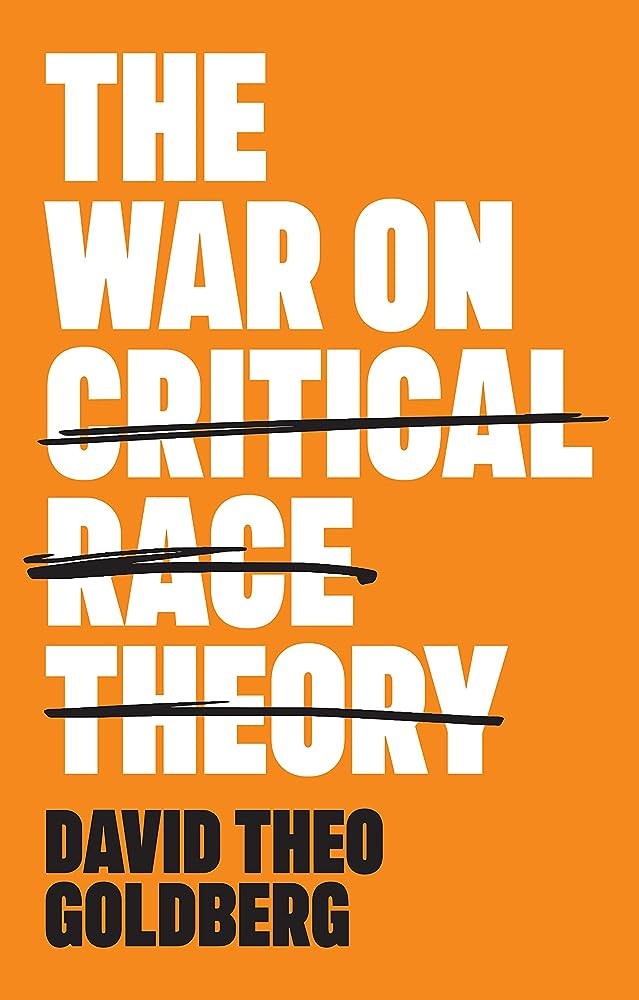
The War on Critical Race Theory: Or, The Remaking of Racism
 In his new book, The War on Critical Race Theory: Or, The Remaking of Racism (Polity), David Theo Goldberg, UCI Distinguished Professor of anthropology, takes a deep dive
into the demonization of Critical Race Theory. Starting with its creation as a legal
analytic in the 70s to its polarized, highly politicized present, Goldberg details
who’s leading the theory’s attacks and why and what the lasting consequences of this
war will be if left unchecked. Below, the anthropologist offers perspective as well
as a path forward for countering racisms’ expressions individually, institutionally,
and socially.
In his new book, The War on Critical Race Theory: Or, The Remaking of Racism (Polity), David Theo Goldberg, UCI Distinguished Professor of anthropology, takes a deep dive
into the demonization of Critical Race Theory. Starting with its creation as a legal
analytic in the 70s to its polarized, highly politicized present, Goldberg details
who’s leading the theory’s attacks and why and what the lasting consequences of this
war will be if left unchecked. Below, the anthropologist offers perspective as well
as a path forward for countering racisms’ expressions individually, institutionally,
and socially.
To start, can you give us a working definition of what Critical Race Theory is?
Critical Race Theory developed in the late 1970s and 1980s as a legal analytic to demonstrate how race is structured into American law. “Crits,” as practitioners of legal CRT are known, seek to demonstrate that this structuring reproduces racial modes of inequality, advantaging those who are white while comparatively disadvantaging especially those who are racially identified as Black, Latino, Asian, and Indigenous.
CRT advocates that there is no biological basis to race, that “race” shifts in meaning and points of reference in order to advance the interests of whites at the expense of those who are not. It follows that there is not just one racism but a range working to advantage or disadvantage the interests of racially identified and positioned people. CRT has been committed from the outset to showing that race is not to be taken discretely but interacts “intersectionally” with other social positionings of people, most notably class and gender, thus intensifying the forms of structural discrimination the law enables. Crits further look for the ways racial interests of whites converge, offering in turn racially enabled capacities not otherwise available to them. They stress the role of narrative, or storytelling, thus enabling contribution by those without technical language in identifying and resisting the various racisms they face.
How did CRT become politicized? Who's orchestrating the attacks - and why? How do their motivations play into the overall discourse surrounding this theory and its impact on communities?
The attacks have indeed been orchestrated. The Heritage Foundation, probably the leading conservative driver of ideas, initiatives, and laws shaping American social life, has been the principal instigator of the attacks. In this political weaponizing of CRT to advance their attacks on it, Heritage has received funding and political support for its anti-CRT initiative from other conservative foundations and institutions.
While numerous activists and politicians have engaged in these attacks, the person most readily identified with defining and fueling CRT targeting is Christopher Rufo. Pretty much everyone else has inherited from him what CRT presumptuously is taken to be, its supposed conceptual history and terms of rejection. Working closely with others at the Heritage Foundation, Rufo was increasingly promoted through appearances on Fox News, where Donald Trump discovered him in the months leading up to the 2020 Presidential election. Trump was drawn to his message trashing all progressive critiques and initiatives targeting racism. The then-President’s embrace of Rufo’s messaging advanced it to a core weapon in national political electioneering.
Rufo was quite explicit about using the terms of CRT—“critical,” “race,” and “theory” — as placeholders for all that conservatives regard as the left’s “cultural insanities.” Emptied of intended meaning, these terms could then be filled with caricatures of progressive political positions, critiques, and policies. This, in turn, was used to reject the long history of critical anti-racist policy and action, no matter what CRT in fact has stood for and sought to do. Rufo and his followers have been engaged in misreading and fabrication, a clever if completely disingenuous mode of political agitprop, with considerable misleading impact.
Your book focuses particularly on how attacks on CRT have impacted public schooling. Could you elaborate on how these attacks have affected educational institutions and students?
Public schooling at all levels has indeed been a key focus of the Rufo-driven attacks on CRT. When Rufo appeared on Fox and was embraced by Trump as a key conservative ideologue, schools and colleges were on pandemic lockdown. Some parents were concerned to get their children back to school, thinking the pandemic exaggerated, so they could get back to work and socializing. These parents, overwhelmingly white, were also alarmed that critical views regarding racism had been made to occupy so prominent a feature across the curriculum. Rufo’s targeting of what students were being taught touched a raw nerve. It offered them the means to reject existing school curricula, textbooks, classrooms, and lessons, in turn purging progressive analysis of racism.
There was more, though. Conservative groups provided significant funding to support electing school board members who would advance this purging and impose draconian measures on school districts and schools. They sent seemingly concerned parents to shout down school boards, introduce conservative initiatives, and disrupt schooling. In many instances these activists were paid agitators, often from out-of-state. In his campaign for the governorship of Virginia, Glenn Youngkin secured victory by embracing both this conservative messaging and tactics. One of his first acts as Governor was to appoint as the state’s chief diversity officer the then-President of the Heritage Foundation.
The effect has been to close off to student learning critical accounts of the role of racisms in American history. They have underplayed the impact of slavery in shaping the country over time, banning history books and literary accounts revealing to students such impact not only from classroom use but also from school and university libraries. And they have curtailed initiatives seeking to advance anti-racist policy and action in their name from any school and college usage. The undertaking, in short, has been to reshape public understanding of racism, and delimit policies seeking to advance racial justice.
One of the central themes of your book is the enduring nature of structural racism, despite claims of colorblindness. Could you explain how colorblindness serves to silence meaningful actions against racism?
Structural racism is the set of conditions that promote and sustain lower quality treatment, access, and social resources available to Black and Brown people. The result has been restriction of access to quality housing, schooling, health care, work, mortgages and loans, as well as environmental conditions. Such restriction may no longer be explicit in institutional rules and protocols. But when not directly addressed, the effects of these embedded structural conditions inherited and reproduced from the past continue to be experienced: reduced home values; higher unemployment; significantly more challenged and less addressed health conditions; higher mortgage and loan rates; and urban heat rising up to 10 degrees Celsius higher than whiter suburban areas which enjoy significantly more surrounding greenery than the cemented inner city.
Those attacking CRT, most notably Christopher Rufo and his followers, deny structural racism any longer exists. After the 1964 Civil Rights Act, they insist, racism increasingly became a strictly individual expression, requiring that individual racist intentionality be demonstrated as proof. Racist producers are reduced on this account to no more than an individual bad apple here or there.
It follows that Rufo and company deny ongoing contemporary structural racism by definition, providing no arguments to sustain ongoing structurally embedded erasure. Their overriding commitment to colorblindness, in inexplicable denial of the ongoing impacts of structural racisms, renders it impossible to address these differential impacts. What they don’t “see” effectively doesn’t exist for them—or the law—and so requires no action to address or redress. Colorblindness blinds its practitioners to the racially charged conditions they feel there is no social need to attend to. It thus renders impossible to address that which is deemed by presumption to be irrelevant, if not to exist at all.
You argue that targeting Critical Race Theory has unleashed racisms anew and protected white minority rule. Can you explain how these consequences have unfolded in society and what steps can be taken to address these issues?
Rufo and his followers insist, with no argument, that “Critical Race Theory” includes all critical targeting and discussion of racism, no matter significant differences between progressive and liberal critics. Most notably, those like Rufo insist that there is no longer systemic or structural racism, no embedding of racism within the structures of American law and society, and that what racism does exist is strictly and only the expression of individual—and so uncoordinated—racists. So they have nothing critical to say about the contemporary surge in white nationalism (presuming that only whites belong in the country) and white supremacy (that whites are superior to anyone not).
The attack on CRT, in short, has the effect of “deregulating racism,” of licensing with little if any limitation a wide range of renewed racist expression: the denial of the impact of slavery on American life, conducting “slave auctions” by high school students of fellow Black students; the banning of books from school classrooms and libraries accounting for segregation’s impacts on access to schooling, housing, and employment; the brutal treatment by police of Black people in routine traffic stops and their over-representation in the criminal justice system, prisons in particular; and most recently the closing down of initiatives to increase diversity and inclusion across American social life.
This has all transpired as the representation of whites in the American population is diminishing. Within the next 15 to 20 years, whites will no longer constitute a majority of Americans. While whites continue to control economic, social, and legal arrangements in the U.S., they sense they are at risk of losing political power. Hence the undertaking dramatically to curtail voting rights of those not white. In his lone dissent to Plessy v. Ferguson (1896) (the case rendering segregation constitutionally viable), Justice John Harlan emphasized that formal segregation is unnecessary to maintain white dominance in America. Whites were so advanced over Blacks and others economically, educationally, socially, and culturally, Harlan insisted, that colorblindness would suffice always to maintain that competitive advantage. Colorblindness, given the legacy of domination and control, would suffice to sustain white power. Rufo and his followers today take their cue from Harlan’s lead.
Given the copious nature of the Heritage-inspired rejections of CRT, and the debilitating effects in addressing racism, any counter requires multi-pronged and multi-scalar commitments. Facing down racism, experience has long shown, requires sustained action over time, not a one-time response. It requires addressing any individual or institutional expression of racism close to its point and time of expression; surfacing and addressing racist impacts of institutional policies, rules, regulation, and action; reversing institutional rules with discriminatory racial impact (for example, gerrymandered voting districts that make it more difficult if not impossible for people of color to elect a candidate of their choice than it is for white voters to elect a white candidate of theirs); finding creative ways to make available to readers of all backgrounds school textbooks or library books laying out the country’s or region’s racist history and ongoing impacts; etc.
Allowed to fester, racism is bound to manifest. Critical Race Theory, properly understood, provides the tools for necessarily identifying and addressing racisms’ expressions individually, institutionally, and socially.




connect with us